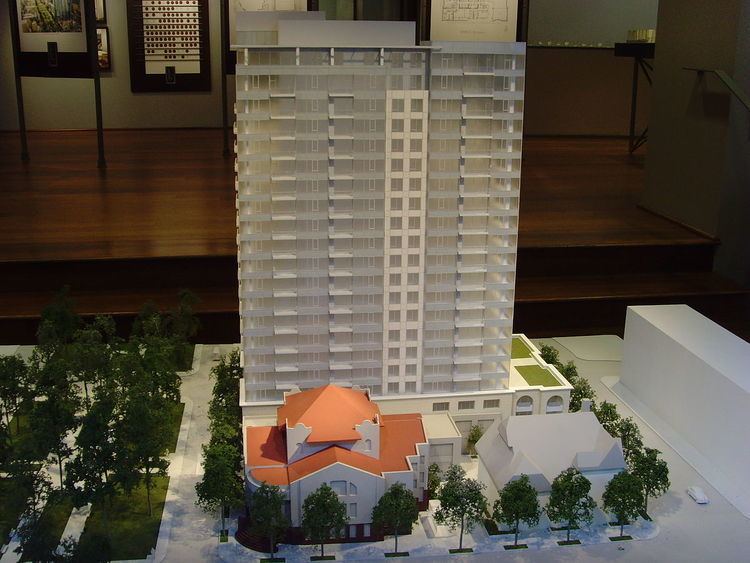 | ||
An architectural model is a type of scale model - a physical representation of a structure - built to study aspects of an architectural design or to communicate design ideas.
Contents
Depending on the purpose, models can be made from a variety of materials, including blocks, paper, and wood, and at a variety of scales.
Purpose
Architectural models are used by architects for a range of purposes:
Types of models include:
Virtual modeling
Buildings are increasingly designed in software with CAD (computer-aided design) systems. Early virtual modelling involved the fixing of arbitrary lines and points in virtual space, mainly to produce technical drawings. Modern packages include advanced features such as databases of components, automated engineering calculations, visual fly-throughs, dynamic reflections, and accurate textures and colours.
Materials
Rough study models can be made quickly using cardboard, wooden blocks, polystyrene, foam, foam boards and other materials. Such models are an efficient design tool for three-dimensional understanding of a structure, space or form, used by architects, interior designers and exhibit designers.
Common materials used for centuries in architectural model building were card stock, balsa wood, basswood and other woods. Modern professional architectural model builders are taking advantage of twenty-first century materials, such as Taskboard (a flexible and lightweight wood/fiber board), plastics, wooden and wooden-plastic composites, foams, foam board and urethane compounds.
A number of companies produce ready-made pieces for structural components (e.g. girders, beams), siding, furniture, figures (people), vehicles, trees, bushes and other features which are found in the models. Features such as vehicles, people figurines, trees, street lights and other are called "scenery elements" and serve not only to beautify the model, but also to help the observer to obtain a correct feel of scale and proportions represented by the model.
Increasingly, rapid prototyping techniques such as 3D printing and CNC routing are used to automatically construct models straight from CAD plans.
Scales
Architectural models are being constructed at much smaller scale than their 1:1 counterpart.
The scales and their architectural use is broadly as follows:
Sometimes model railroad scales such as 1:160 and 1:87 are used due to ready availability of commercial figures, vehicles and trees in those scales, and models of large buildings are most often built in approximately that range of scales due to size considerations.
